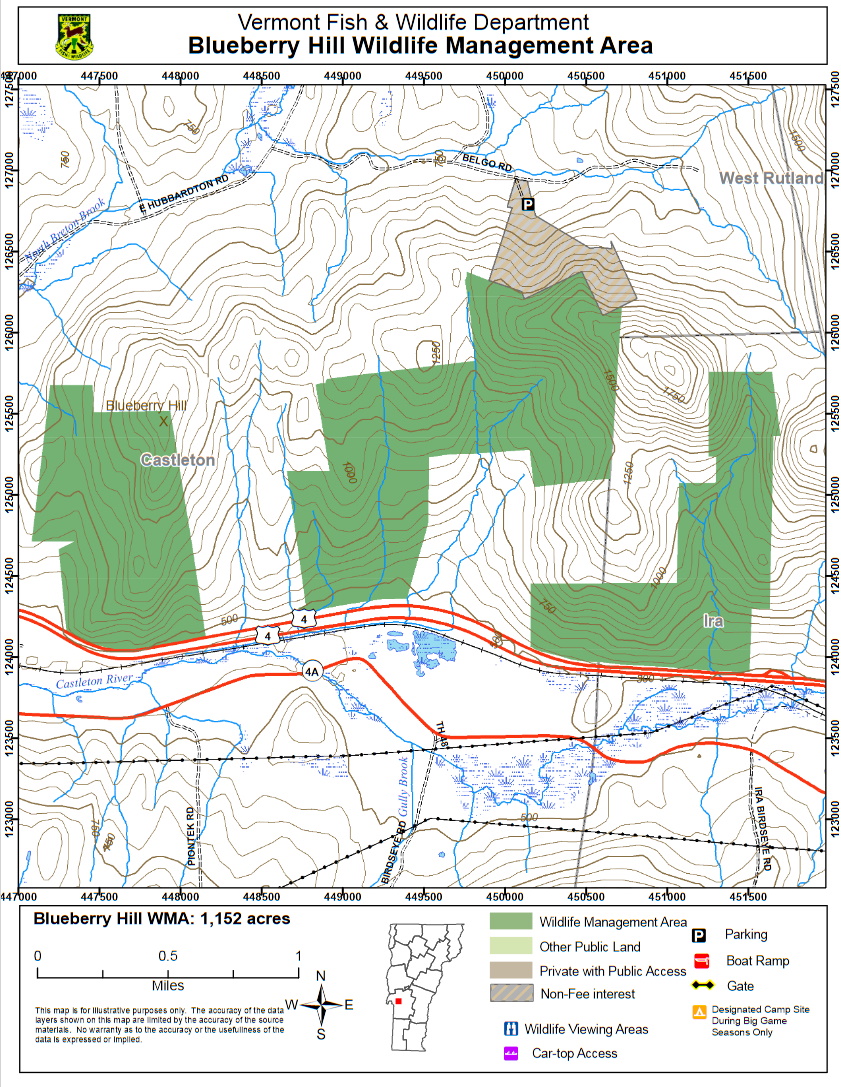Blueberry Hill WMA
Birds of Interest
The mixed forest and varied elevations support a variety of birds. Red-tailed hawks have been seen perching conspicuously. Rough-legged hawks hunt in the open fields of Blueberry Hill Wildlife Management Area along Route 4. At night, the distinctive call of barred owls can be heard. Numerous songbirds such as blue jays, black-throated blue and black-throated green warblers, scarlet tanagers, rose-breasted grosbeak, indigo buntings, hermit thrushes, and hummingbirds can be seen on the WMA. Blueberry Hill WMA supports a large number of turkeys, particularly in the fall when acorns are present. Ruffed grouse can be found in the open areas, especially in early successional habitats.
About this Location
Blueberry Hill Wildlife Management Area (WMA) is 1,152 acres in size. It is owned by the State of Vermont and managed by the Vermont Fish and Wildlife Department. The property consists of three separate parcels, referred to here as the eastern, middle, and western parcels. It is located in the towns of Castleton (936 acres) and Ira (216 acres) just off Route 4. Parking and public access to the middle parcel of Blueberry Hill WMA are available through an 80-acre parcel owned by the Vermont Federation of Sportsmen’s Clubs located off Belgo Road. The WMA can be reached by climbing up the hill due south of the parking lot. There is no access to Blueberry Hill WMA from Route 4 since this is a limited-access highway. Parking in the Route 4 rest area is strictly prohibited.
Blueberry Hill WMA contains steep mountainous terrain that ranges from about 500 feet near Route 4 to about 1,800 feet in elevation on the eastern parcel. Blueberry Hill, which lies just north of the western parcel, is 1,246 feet high. The forests within the WMA are a mixture of red, chestnut, and white oak, birches, maples, aspen, hickories, hophornbeam, and white pine. Old fields and apple orchards are scattered throughout the parcel.
The oaks, hickories, and hophornbeams on Blueberry Hill WMA produce excellent mast, which is an important wildlife food resource. The blueberries that can be found on this WMA are another good food source.
The entire WMA serves as a critical deer wintering habitat. Although the softwood cover is limited to scattered stands of white pine, the direct southerly exposure melts the snow even within the adjacent hardwoods. As a result, deer can move throughout the slopes of Blueberry Hill during most winters.
Features
Restrooms on site
Wheelchair accessible trail
Entrance fee
Content from Blueberry Hill Wildlife Management Area guide and map
Last updated December 3, 2023
